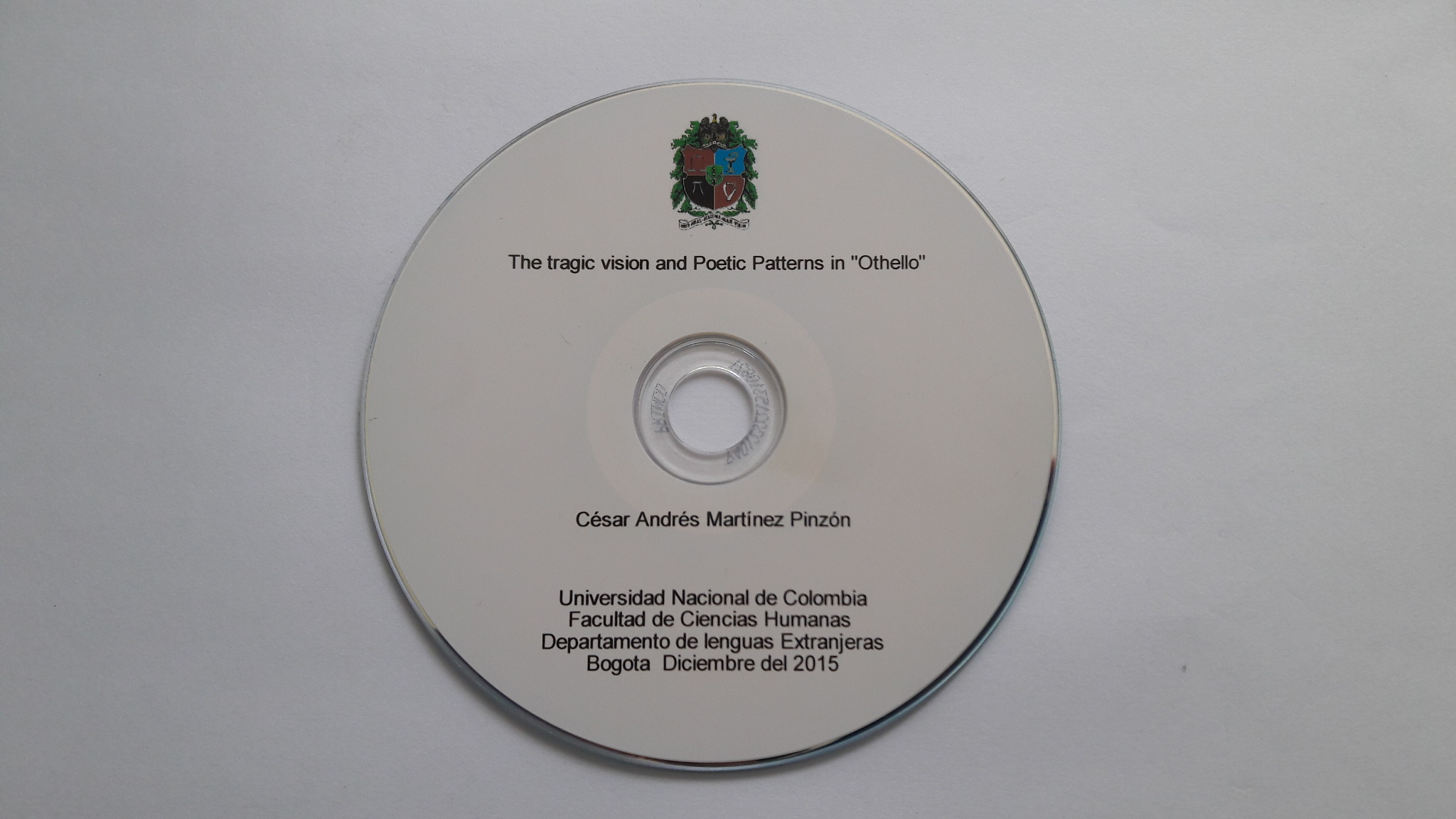
Graduation Paper:
The Tragic Vision and Poetic Patterns in Othello by William Shakespeare
Year: 2015

Abstract
This work has been the outcome of a long and steady reflection on a poetics that is the manifestation of the highest form of verbal art: tragedy. This study identifies the tragic vision – the architectural form- as well as the compositional form – the metrical and phonal patterns that appear in the climax of “Othello†by William Shakespeare. The study establishes the relations between the tragic vision of the dramatic piece and the metrical and phonal features of late Shakesperian poetics. The comprehension of such relations greatly enriches the aesthetic experience.
The findings lead to the characterization of Shakespeare’s versification.
Keywords
Tragic vision, Metrical and phonal patterns, Climax, Architectural form, Compositional form
References
Bayfield, M. (1920) A Study of Shakespeare’s Versification. London: Cambridge University Press.
Bradley, A, C. (1949) Shakespearean Tragedy. New York: The MacMillan Company
Campbell, O. (1970) The Living Shakespeare Twenty-plays and the sonnets. Chicago: Macmillan Company
Paterson, M. (2002) WHAT IS PENTAMETER?: THE FIVE IN SHAKESPEARE’S VERSE. Philadelphia: English Studies, 83, no. 2 (2002): 97-135. Taylor & Francis
Pouliquen, H. (1992) TeorÃa y Análisis SociocrÃtico. Bogota: Departamento de literatura Universidad Nacional de Colombia
Price, T. (1888) The Construction and Types of Shakespeare’s verse as seen in the Othello. New York: Shakespeare society of New York
Schipper, J. (1910) History of English Versification. London: Clarendon press
Womack, M. (2003) Shakespearean Prosody Unbound. San Antonio: Boston, Heath